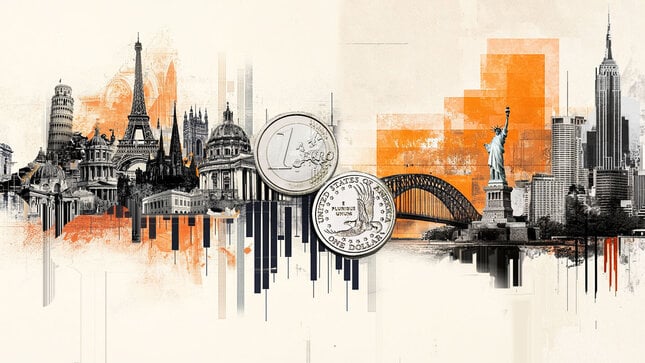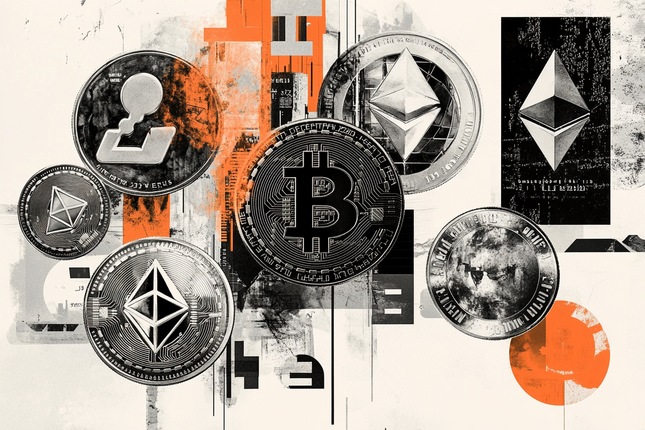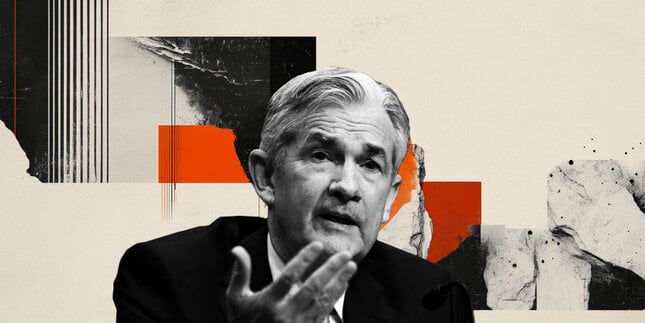The game-changer
The world of artificial intelligence (AI) has undergone a seismic shift in the past two years, driven largely by the introduction of advanced language models like ChatGPT. While AI has been an evolving presence in trading for over a decade, the arrival of ChatGPT acted as a powerful catalyst—a “game changer”—igniting a broader transformation across the financial landscape.
ChatGPT as the AI detonator
ChatGPT, an advanced generative AI model by OpenAI, has become more than a tool for casual conversation; it has transformed into a sophisticated instrument that enhances decision-making in trading and investment. This evolution goes beyond previously proposed incremental improvements in AI; it represents a quantum leap in how artificial intelligence can be applied by a broad spectrum of users to analyze, predict, and act on market data. The widespread adoption of ChatGPT has served as a detonator for AI’s rapid expansion, reshaping the trading landscape in the following critical ways:
1. Enhanced natural language processing for market analysis
ChatGPT has set new benchmarks in natural language processing (NLP), making it possible to interpret, analyze, and summarize vast amounts of textual data almost instantaneously. From earnings call transcripts to analyst reports, ChatGPT can distill critical information, providing traders with insights that were previously buried under the sheer volume of data.
- Impact on trading
Traders can now harness real-time analysis of news, social media, and financial reports, gaining a strategic edge in anticipating market reactions and adjusting their positions accordingly. The speed at which ChatGPT processes information directly impacts the timing and effectiveness of trades, enhancing overall market efficiency.
- Real-world example
During the recent banking turmoil caused by institutions like Silicon Valley Bank (SVB) and Credit Suisse, ChatGPT helped traders quickly analyze CEO statements and quarterly earnings call transcripts. By examining language for signs of financial instability or market confidence, traders could make faster decisions, whether taking protective measures or exploiting short-term market volatility.
2. Personalized advisory at scale
ChatGPT has revolutionized personalized advisory by offering tailored advice based on individual profiles, preferences, and risk tolerance. Unlike traditional systems that provided generic recommendations, ChatGPT can interact with traders in a more conversational and intuitive manner, creating a highly customized advisory experience.
- Impact on trading
Personalization goes beyond simple buy or sell signals—it enables the creation of bespoke strategies that align with the unique goals and risk appetite of each trader. The ability to engage with AI as if it were a human advisor democratizes access to high-level trading insights, making sophisticated strategies available to both institutional and retail investors.
- Real-world example
Financial advisory firms are using ChatGPT to enhance their customer engagement platforms, enabling personalized investment suggestions based on real-time market conditions and individual financial goals. AI-driven recommendations have resulted in increased customer satisfaction and improved portfolio performance, particularly during turbulent market periods.
3. Generative AI for strategy innovation
One of ChatGPT’s most groundbreaking contributions is its use of generative AI to brainstorm and develop new trading strategies. By simulating various market scenarios and stress-testing strategies under different conditions, ChatGPT empowers traders to explore creative solutions that were previously unfeasible due to time and resource constraints.
- Impact on trading
The ability to autonomously generate and refine strategies accelerates the innovation cycle, allowing traders to stay ahead of market trends. Rapid iteration enabled by generative AI means that strategies can be continuously improved, adapting swiftly to changing market dynamics.
- Real-world example
Quantitative hedge funds have integrated ChatGPT to refine and test algorithmic trading strategies in dynamic environments. Furthermore, FX broker companies have leveraged ChatGPT models to create and validate new strategies that adapt to increasing volatility, enabling them to maintain competitive returns despite challenging market conditions.
4. Streamlined data handling and analysis
ChatGPT’s integration capabilities allow it to pull and synthesize data from multiple sources, including traditional financial databases, social media feeds, and even audio transcripts of market news. Its capacity to handle complex data types in real-time means that traders can work with a more comprehensive and up-to-date information set than ever before.
- Impact on trading
By aggregating and analyzing macroeconomic data, micro-level financial indicators, and market sentiment, ChatGPT provides traders with a 360-degree view of market conditions. This holistic approach supports better decision-making, helping traders spot opportunities and risks that might otherwise go unnoticed.
- Real-world example
Major trading platforms have begun incorporating ChatGPT into their systems, allowing analysts to automatically summarize and interpret vast amounts of incoming news. This integration has enabled quicker, more informed decision-making during events like Federal Reserve meetings, where immediate analysis of speeches and statements can significantly impact trading strategies.
5. Improving trader psychology and risk management
ChatGPT is changing the way traders think about their psychology and risk management. By engaging traders in reflective conversations, ChatGPT helps them understand their biases, evaluate their emotional responses to market movements, and refine their decision-making processes.
- Impact on trading
This real-time coaching capability reduces the psychological pressures of trading, leading to more disciplined and rational behavior. It also helps traders better manage their risk by continuously reminding them of their predefined risk limits and encouraging adherence to their trading plan.
- Real-world example
Traders at proprietary trading firms have used ChatGPT as a tool for daily self-reflection, helping them identify cognitive biases that affect trading performance. Through AI-driven discussions on recent trades and strategies, traders are better equipped to manage their emotions and maintain discipline, especially in high-stakes environments.
6. Educational tools and skill enhancement
ChatGPT serves as a continuous learning tool for traders, providing explanations, historical context, and real-time feedback on market conditions. This function not only assists in strategy development but also enhances a trader’s understanding of market mechanics and the rationale behind AI-driven recommendations.
- Impact on trading
The ability to educate while advising means that traders are not just executing strategies—they are learning and evolving their skills. This dual role of advisor and educator sets the foundation for a more informed and resilient trading community.
- Real-world example
Some Brokers integrated ChatGPT to offer real-time educational support, answering questions about trading concepts, market conditions, and even technical analysis techniques. This integration has been especially valuable for novice traders seeking to deepen their market knowledge while actively trading.
The broader impact on the world of investments and trading
The introduction of ChatGPT and similar AI models has broader implications for trading and investments:
Level playing field
ChatGPT democratizes access to advanced trading insights, tools, and strategies, making them available to retail traders who were previously excluded from these capabilities. This levels the playing field between individual investors and large institutions.
- Real-world example
Retail trading platforms have begun integrating AI chatbots to provide personalized trade suggestions and educational content to retail traders, helping them navigate markets with sophisticated tools typically reserved for institutional players.
Acceleration of market movements
As AI-driven decisions become more prevalent, market reactions are likely to speed up, potentially increasing volatility. Traders who leverage AI effectively can navigate this increased pace with more agility, while those who lag behind may find themselves at a disadvantage.
- Real-world example
During the rapid sell-off in tech stocks in early 2023, algorithmic trading driven by real-time AI analysis exacerbated market moves. Firms equipped with AI like ChatGPT were able to adjust their portfolios more rapidly, avoiding the worst losses seen by less agile market participants.
New ethical and regulatory considerations
The rise of AI in trading raises questions about transparency, accountability, and the ethical use of these technologies. Regulators will need to evolve alongside these advancements to ensure market integrity and protect investors.
- Real-world example
The SEC and other financial regulators have started investigating the use of AI in trading, recognizing the need for updated guidelines to manage risks associated with automated decision-making, market manipulation, and data privacy.
Shift in skills required
The role of traders is shifting from manual execution to strategic oversight and AI management. This evolution emphasizes the need for skills in data science, AI interpretation, and technology integration, redefining what it means to be a successful trader in the modern market.
- Real-world example
Major investment banks and Broker companies have increased hiring of data scientists and AI specialists to work alongside traditional traders, signaling a clear shift towards a more technology-driven approach to market operations.
Embracing the AI-driven future
The explosion of AI, ignited by ChatGPT, represents a fundamental shift in the trading and investment landscape. Traders who embrace these advancements will find themselves equipped with tools that not only enhance efficiency but also unlock entirely new dimensions of market engagement. The potential impact is profound: AI is not just an incremental improvement—it is a transformative force reshaping the future of trading.
As we move forward, the ability to integrate and leverage AI like ChatGPT will become a defining factor in trading success. Traders and investors who adapt quickly, understand the technology, and use it to its fullest potential will lead the way in this new AI-driven era of finance.
CFDs are complex instruments and come with a high risk of losing money rapidly due to leverage. You should consider whether you understand how CFDs work and whether you can afford to take the high risk of losing your money. The Article/Information available on this website is for informational purposes only, you should not construe any such information or other material as investment advice or any other research recommendation. Nothing contained on this Article/ Information in this website constitutes a solicitation, recommendation, endorsement, or offer by LegacyFX and A.N. ALLNEW INVESTMENTS LIMITED in Cyprus or any affiliate Company, XE PRIME VENTURES LTD in Cayman Islands, AN All New Investments BY LLC in Belarus and AN All New Investments (VA) Ltd in Vanuatu to buy or sell any securities or other financial instruments in this or in in any other jurisdiction in which such solicitation or offer would be unlawful under the securities laws of such jurisdiction. LegacyFX and A.N. ALLNEW INVESTMENTS LIMITED in Cyprus or any affiliate Company, XE PRIME VENTURES LTD in Cayman Islands, AN All New Investments BY LLC in Belarus and AN All New Investments (VA) Ltd in Vanuatu are not liable for any possible claim for damages arising from any decision you make based on information or other Content made available to you through the website, but investors themselves assume the sole responsibility of evaluating the merits and risks associated with the use of any information or other Article/ Information on the website before making any decisions based on such information or other Article.
Editors’ Picks

EUR/USD rebounds after falling toward 1.1700
EUR/USD gains traction and trades above 1.1730 in the American session, looking to end the week virtually unchanged. The bullish opening in Wall Street makes it difficult for the US Dollar to preserve its recovery momentum and helps the pair rebound heading into the weekend.

USD/JPY rallies to near 157.00 as Yen plunges after BoJ’s policy outcome
The USD/JPY is up 0.85% to near 156.90 during the European trading session. The pair surges as the Japanese Yen underperforms across the board, following the Bank of Japan monetary policy announcement. In the policy meeting, the BoJ raised interest rates by 25 bps to 0.75%, as expected, the highest level seen in three decades.

Gold stays below $4,350, looks to post small weekly gains
Gold struggles to gather recovery momentum and stays below $4,350 in the second half of the day on Friday, as the benchmark 10-year US Treasury bond yield edges higher. Nevertheless, the precious metal remains on track to end the week with modest gains as markets gear up for the holiday season.

Crypto Today: Bitcoin, Ethereum, XRP rebound amid bearish market conditions
Bitcoin (BTC) is edging higher, trading above $88,000 at the time of writing on Monday. Altcoins, including Ethereum (ETH) and Ripple (XRP), are following in BTC’s footsteps, experiencing relief rebounds following a volatile week.

How much can one month of soft inflation change the Fed’s mind?
One month of softer inflation data is rarely enough to shift Federal Reserve policy on its own, but in a market highly sensitive to every data point, even a single reading can reshape expectations. November’s inflation report offered a welcome sign of cooling price pressures.
RECOMMENDED LESSONS
Making money in forex is easy if you know how the bankers trade!
I’m often mystified in my educational forex articles why so many traders struggle to make consistent money out of forex trading. The answer has more to do with what they don’t know than what they do know. After working in investment banks for 20 years many of which were as a Chief trader its second knowledge how to extract cash out of the market.
5 Forex News Events You Need To Know
In the fast moving world of currency markets where huge moves can seemingly come from nowhere, it is extremely important for new traders to learn about the various economic indicators and forex news events and releases that shape the markets. Indeed, quickly getting a handle on which data to look out for, what it means, and how to trade it can see new traders quickly become far more profitable and sets up the road to long term success.
Top 10 Chart Patterns Every Trader Should Know
Chart patterns are one of the most effective trading tools for a trader. They are pure price-action, and form on the basis of underlying buying and selling pressure. Chart patterns have a proven track-record, and traders use them to identify continuation or reversal signals, to open positions and identify price targets.
7 Ways to Avoid Forex Scams
The forex industry is recently seeing more and more scams. Here are 7 ways to avoid losing your money in such scams: Forex scams are becoming frequent. Michael Greenberg reports on luxurious expenses, including a submarine bought from the money taken from forex traders. Here’s another report of a forex fraud. So, how can we avoid falling in such forex scams?
What Are the 10 Fatal Mistakes Traders Make
Trading is exciting. Trading is hard. Trading is extremely hard. Some say that it takes more than 10,000 hours to master. Others believe that trading is the way to quick riches. They might be both wrong. What is important to know that no matter how experienced you are, mistakes will be part of the trading process.
The challenge: Timing the market and trader psychology
Successful trading often comes down to timing – entering and exiting trades at the right moments. Yet timing the market is notoriously difficult, largely because human psychology can derail even the best plans. Two powerful emotions in particular – fear and greed – tend to drive trading decisions off course.
